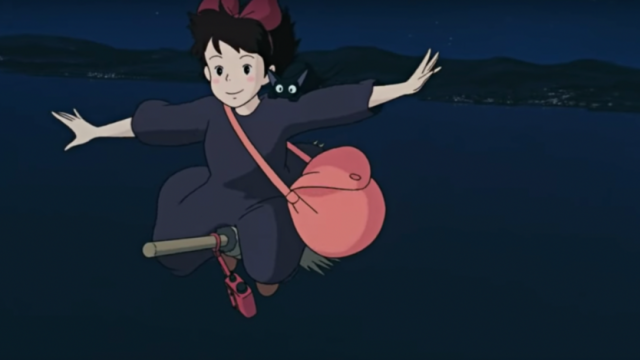There are Ghibli princesses. They are very, very different than Disney princesses, but there are several of them. Hayao Miyazaki created Mononoke and Pazu and arguably Ponyo; Isao Takahata brought Kaguya to life. (Castle of Cagliostro technically isn’t Ghibli but features Princess Clarisse, frankly the closest to Disney’s; Nausicaä is similarly not Ghibli.) But even leaving aside the princesses, the studio has a wide array of films with girls as leads—not women but girls. Some of them are teenagers, and some of them are active children, and some are are trying to find their way from childhood to adulthood, but probably the majority of Ghibli’s leads are girls.
Miyazaki in particular seems driven by a sense of feminism. He has long been firm that girls are just as capable as boys, and he created lead roles to demonstrate that fact. Most of his movies have female leads, and when they don’t, they tend to have at least one female character who is important to the narrative. Even Porco Rosso’s Gina is more than just the beautiful woman who loves the title character; she’s a savvy businesswoman who sets in motion several important bits of the story. The Wind Rises doesn’t do much with its female lead, but there’s a bit more historical limitation happening there.
I might know people who don’t like any Ghibli, but Lord I don’t know many, and one of the things this does is emphasize that there can, too, be Universal Stories About Girls. Popular wisdom in storytelling holds that stories about girls are for girls and stories about boys are universal, and it’s satisfying to know that even people who instinctively agree with that can’t deny the power of Kiki’s story. Losing what you think is the only thing you’re good at is a gut-punch no matter your gender, especially when you lose your best friend at the same time. Kiki is lost, and it’s almost impossible not to feel sympathetic to her, then triumphant with her at the end.
If Sophie’s story is missing a lot from the original Howl’s Moving Castle, well, adaptations lose things most of the time. Still, Sophie is another character with a story arc that feels familiar to people regardless of gender. Her limitations in the book, at least, have a lot more to do with her gender than not, but she’s still someone who cannot escape out from under the burdens on her who desperately wants to, and who can’t identify with that? And then she’s got to put up with all Howl’s crap, which is surely just what she needs.
If anything, there are more Ghibli movies with ensemble casts or joint leads than there are Ghibli movies with a single male lead. Far more have female leads—or joint female leads, depending on your take on Totoro—than either of those. At least one has a male lead but is named for its main female character and also has inarguably the coolest mom in the Ghibli canon. It’s a great studio for girls with a wide array of different personalities; Haru and Chihiro are both fantastical situations and react very differently, for example. Everyone can find a Ghibli girl they can relate to.
Support underdiscussed topics like this by contributing to my Patreon or Ko-fi!

